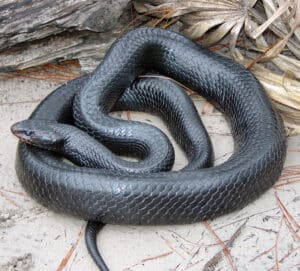
The Animal Behavior Management Alliance, an international organization focused on animal behavior, training and enrichment, published the students’ research in The Wellspring, a newsletter edited and refereed by leading experts in animal behavior.
Student researchers included Matt Czachur, Diana Haddad, Dean Logus, Sean Marley, Michelle Packard, Cyrus Rhodes, and Jason Williams.
The septet, however, aren’t named as study authors. Because academic journals generally publish only credentialed authors with professional experience, the Alliance listed the students’ teacher, Brian Ogle, an anthrozoology instructor at Beacon College in Leesburg, FL, the first accredited college to award bachelor’s degrees exclusively to students with learning disabilities and ADHD, as co-author.
Byline protocol aside, Ogle says what most matters is that because the Alliance focuses on “enhancing animal care through training and enrichment,” the Beacon “findings will be read by practitioners in zoological institutions and research facilities across the globe who directly influence or oversee protocols related to behavior in zoological collections.”
The seven students in last summer’s Introduction to Animal Behavior course designed the study to examine whether captive snakes reacted differently because of direct human contact or interaction.
The study featured 20 eastern indigo snakes (Drymarchon corais couperi), “a large, black, nonvenomous snake found in the southeastern U.S.” that is listed in Florida as a threatened species, according the U.S. Fish and Wildlife Service website. The study population included two age groups: mature adults (five years or older) and juvenile animals (under nine months).
Students subjected the snakes to three levels of human contact and measured the snakes’ behavior before, during and after exposure. Behaviors included body postures, positioning within the enclosure, direction of attention, and tongue flicks per 20 seconds.
Preliminary data suggests that human interaction elevates arousal in captive snakes.
“These findings highlight the potential human interference may have on welfare, breeding success, and the potential to influence the snake in behavioral studies and observations,” Ogle says.
Not that Ogle and his student researchers are finished.
The findings from the published study will inform the methods in a follow-up study.
That desire to continuing probing, he says, gets to the heart of why animal science works well for Beacon students.
“As an educator, the most rewarding aspect of this does not center on their final product being made available to professionals across the globe, but seeing their excitement for the process,” Ogle says. “All seven students noted the research project was their favorite part of the class. To see students engage in questioning and examination of how the world works is very exciting to me.”